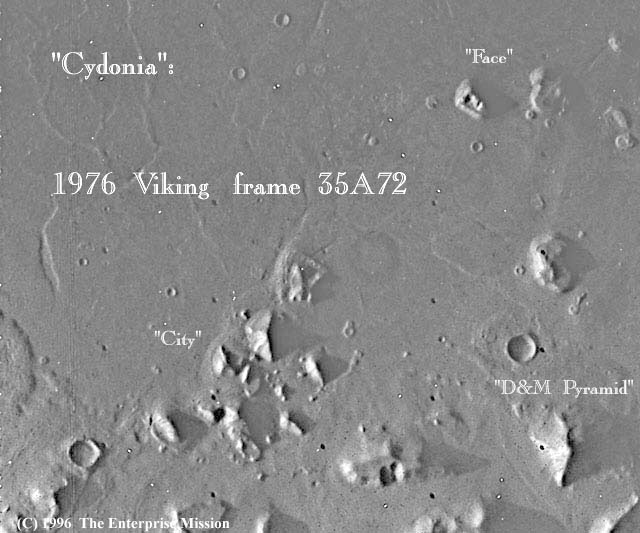
Hoagland | title = The Monuments of Mars - A City on the Edge of Forever | edition = 4th edition | publisher = Frog Books | year = 1996 | pages = pg. Last = Hoagland | first = Richard | authorlink = Richard C. When the image was originally acquired, Viking chief scientist Gerry Soffen dismissed the "face" in image 35A72 as a " of light and shadow". In one of the images taken by Viking 1 on July 25 1976, one of the Cydonian mesas, situated at 40.75° north latitude and 9.46° west longitude, had the appearance of a humanoid "Face on Mars". , NASA Jet Propulsion Laboratory raw data in IMQ (ImageQ) format can be downloaded from these links:, ,, ,,. Of the seven good images, the lighting and time at which two pairs of images were taken are so close as to reduce the number to five distinct images. The other eleven images have resolutions worse than 550 m/pixel (1800 ft/pixel) and are virtually useless for studying surface features. 20 meters per pixel resolution.]Įighteen images of the Cydonia Mensae region on Mars were taken by the Viking 1 and Viking 2 orbiters, of which seven have resolutions better than 250 m/ pixel (820 ft/pixel). "Applied Optics" 27, 1926-1933.] and popular attention. "Geophysical Research Letters" 26, 3049-3052.] Cydonia is covered in numerous mesas, some of which have attracted both scientific Carlotto, M. "Geophysical Research Letters" 25, 4401-4404.] and that Cydonia may have been a coastal zone (though this is still uncertain). Some planetologists believe that the northern plains may once have been ocean beds. It lies in the planet's northern hemisphere in a transitional zone between the heavily cratered regions to the South, and relatively smooth plains to the North. This entry was posted in Maths is Fun! - Maths Elective and tagged Astronomy, Mars One on Decemby User deactivated.Cydonia Mensae is an albedo feature (region) on the planet Mars (named after a historic city state in Crete). Available at: (Accessed: 1 December 2015) (2013) ‘Mars One: The psychology of isolation, confinement and 24-hour Big Brother’, theguardian, 9 September. Available at: (Accessed: 1 December 2015)Ĭhambers, C. (2015) ‘How Living on Mars Could Challenge Colonists’, Space, 17 February. For example, students could debate whether it is morally correct to send people on this one way mission to Mars. These issues could be discussed further in a classroom setting. There is great controversy about this mission, as potential risks include social isolation, loss of privacy and lack of mental health services (Chambers, 2013). It should be noted that this the Mars One mission brings about many risks. For example, the concept of time or temperature could be taught using these comparisons as questions to discuss or further analyse. All these concepts could be explored further in the primary school setting. Days as well as years differ on Mars, as it takes mars longer to orbit the sun than the earth (Tate, 2015). Temperatures on Mars are on average minus 64☌, while on earth they are an average of 16.8☌ (Tate, 2015). A little over a third than that of earth. Mars has a considerably lighter gravity (Tate, 2015). The diagram on the left emphasises this comparison.

Mathematics is clearly involved when comparing the conditions of Mars to those of earth.

I wanted to find out about the conditions participants of the Mars One mission would face. Thousands of people from all around the world have applied to take part in this project and as of February 2015 this selection has been narrowed down to 100 applicants (Mars One, 2015). From 2026 onwards, crews will depart for Mars in this one-way mission to live in space. Mars One aims to establish human settlement on Mars (Mars One, 2015). This particular mission could be used in schools, to make the study of different planets more interesting and relevant to students by giving a concrete example. I decided to look into further and find out how mathematics could be involved in this project and how it can be used for my future practice as a teacher. One particular project that struck me immediately, was the Mars One mission. There is no doubt about links between mathematics and astronomy.


 0 kommentar(er)
0 kommentar(er)
